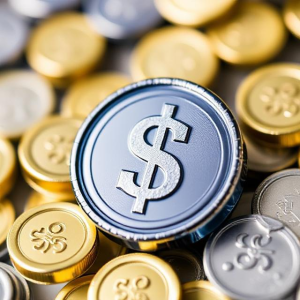Introduction: Why Blue Chip Dividend Stocks Belong in Your Portfolio
In an era of market volatility, blue chip stocks with high dividends offer a rare blend of stability and income. These giants of industry—household names like Coca-Cola and Johnson & Johnson—aren’t just safe bets; they’re cash-generating machines that reward shareholders year after year. Whether you’re a retiree seeking income or a long-term investor building wealth, this guide unpacks everything you need to know.

What Are Blue Chip Stocks?
Blue chip stocks are shares in large, well-established companies with a history of weathering economic storms. Think of brands that dominate their sectors: Microsoft in tech, Walmart in retail, or Pfizer in healthcare. These companies boast:
- Strong balance sheets (low debt, high cash reserves)
- Consistent earnings even during recessions
- Global brand recognition
The term “blue chip” comes from poker, where the highest-value chips are blue. Similarly, these stocks are considered premium investments.
Why High Dividends Matter: More Than Just Passive Income
Dividends are quarterly cash payments to shareholders. High-yield blue chips take this further, offering payouts above the market average (typically 3%+). Here’s why they’re golden:
- Passive Income: Reinvest dividends or use them as income.
- Inflation Hedge: Companies that raise dividends yearly outpace inflation.
- Compounding Magic: Reinvested dividends buy more shares, accelerating growth.
But not all high dividends are equal. A 10% yield could signal trouble if the company can’t sustain it. We’ll cover how to spot red flags later.
Top 10 Blue Chip Stocks with High Dividends (2023 Edition)
Data as of September 2023. Always verify current yields before investing.
Johnson & Johnson (JNJ)
- Dividend Yield: 3.1%
- Sector: Healthcare
- Dividend Streak: 61 consecutive years of increases
Why Invest: JNJ’s diversified portfolio (pharmaceuticals, medical devices, consumer health) ensures stability. Its AAA credit rating is rarer than a unicorn in today’s market.
Procter & Gamble (PG)
- Dividend Yield: 2.5%
- Sector: Consumer Staples
- Dividend Streak: 67 years
Why Invest: Tide detergent and Pampers aren’t going anywhere. PG thrives in downturns as people prioritize essentials over luxuries.
How to Evaluate Blue Chip Dividend Stocks: Beyond the Yield
A high yield is tempting, but smart investors dig deeper:
- Payout Ratio: Dividends paid ÷ earnings. Below 60% is safe (e.g., JNJ’s 65% is manageable due to reliable cash flow).
- Dividend Growth: A 10-year growth streak signals commitment.
- Debt-to-Equity Ratio: Under 2.0 indicates manageable debt.
- Sector Trends: Energy stocks may boom now, but green policies could impact long-term.
Risks You Can’t Ignore
- Dividend Cuts: General Electric slashed its dividend in 2017 after decades. Check for rising debt or falling earnings.
- Interest Rate Sensitivity: Utilities and REITs often drop when rates rise.
- Overconcentration: Don’t put all your eggs in one sector, even if it’s hot.
Building Your Dividend Portfolio: Strategies That Work
- Drip Investing: Automatically reinvest dividends to buy more shares.
- Sector Rotation: Shift from tech to healthcare if valuations peak.
- Tax Efficiency: Hold dividend stocks in tax-advantaged accounts (e.g., IRAs).
Conclusion: Patience Pays
Blue chip stocks with high dividends aren’t get-rich-quick schemes, but they’re bulletproof for building generational wealth. Start with a few proven names, reinvest relentlessly, and let time work its magic.
FAQs
Q: Can dividend yields be too high?
A: Yes. Yields above 6% often signal distress. Always research the “why” behind the number.
Q: How often are dividends paid?
A: Typically quarterly, but some companies pay monthly (e.g., Realty Income).
Q: Do I lose dividends if I sell the stock?
A: Yes. You must own the stock before the ex-dividend date to qualify.